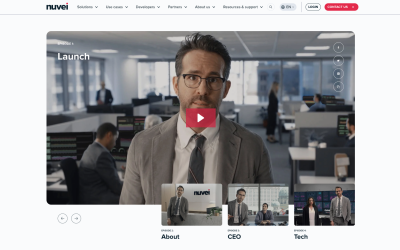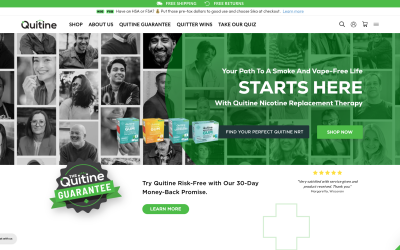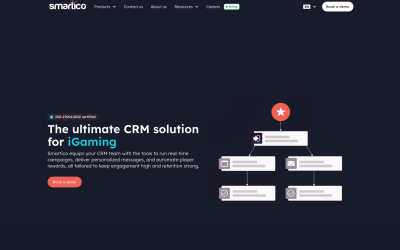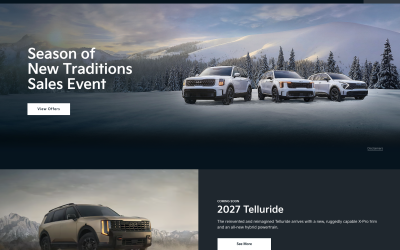Link reclamation is a valuable, yet often overlooked strategy in SEO optimization. This process involves identifying and repairing broken or lost links, providing quick wins for website performance and search engine rankings.
This article delves into the importance of link reclamation, its role in improving site navigation and user experience, and offers detailed strategies for its effective implementation.
Discover how this cost-effective, high-impact tool can significantly boost your SEO efforts in the US, Singapore, and all countries.
Key Takeaways
- Link reclamation helps prevent the loss of link juice and identifies issues with broken links, duplicate content, and internal linking.
- Fixing internal links improves site usability and SEO.
- Finding and fixing broken backlinks can be complicated but is important for maintaining link equity.
- Resolving site canonicalization issues through redirects and rel=canonical tags helps consolidate link equity and strengthen signals.
Rankstar – Your SEO Partner for Your Business Success
→ Unlock the hidden potential of your SEO strategy with Link Reclamation.
Dive into our guide to reclaim lost links, strengthen your website’s authority, and soar higher in search rankings. Explore the power of revitalizing your link profile for maximum impact! Ready to reclaim your SEO success?
Dive in now on Rankstar and redefine your SEO success!

Understanding the Concept of Link Reclamation
In the context of search engine optimization, understanding the concept of link reclamation is crucial for your company, igaming website, startup as it aids in maximizing the value of existing links, fixing defective pages, and ensuring efficient distribution of link juice, thereby significantly enhancing a website’s SEO efforts.
This process involves identifying and fixing broken or outdated URLs, restoring lost link value, and improving the website’s overall link profile. It also includes discovering unlinked brand mentions and turning them into valuable backlinks.
Essentially, link reclamation is a proactive approach to maintaining the health of a website’s link profile and its ability to rank well in search engine results. By focusing on existing resources, link reclamation can provide quick wins, making it a cost-effective strategy in a comprehensive SEO campaign.
The Role of Link Reclamation in SEO
The role of link reclamation in SEO is pivotal as it aids in retaining the value of existing links. It helps rectify broken or outdated URLs and ensures efficient distribution of link juice. All of these factors contribute to a website’s overall search engine ranking.
This practice also helps identify and correct defective pages and problems with internal linking. By enhancing site navigation, link reclamation improves user experience.
Furthermore, link reclamation offers opportunities to find unlinked mentions of your website. These unlinked mentions can serve as easy wins in the link building process. Convincing webmasters to add links not only benefits their users but also improves your off-page SEO.
Despite the challenges, link reclamation is an effective strategy for maximizing the value of existing links and boosting SEO efforts.
Identifying and Repairing Broken Internal Links
Understanding a website’s internal link structure is essential to identify and repair broken links, thereby enhancing the user experience and improving SEO performance.
Broken internal links can lead to a poor user experience and hamper a website’s search engine ranking. They can be identified using tools like Screaming Frog or DeepCrawl. Once identified, these links should be fixed rather than redirected, to preserve link juice.
This process is crucial for a website’s navigation and overall SEO health. It also aids in distributing link juice to other pages, maximizing the SEO value of existing links.
Furthermore, monitoring and fixing internal links can provide quick wins for SEO, while reducing the pressure of building new links. Therefore, understanding and maintaining a website’s internal link structure is imperative for effective SEO.
Techniques for Reclaiming Lost Backlinks
Several effective strategies are available for reclaiming lost backlinks, which can significantly bolster a website’s SEO performance. It involves identifying and fixing broken links, reaching out to webmasters for link reinsertion, and leveraging unlinked brand mentions.
Essential tools like Ahrefs and Majestic can help identify broken backlinks. Webmasters can be contacted for link reinsertion, providing the updated URL. Monitoring unlinked brand mentions using Google Alerts offers opportunities for new backlinks.
The following table highlights the main steps and tools involved in the process:
| Steps for Reclaiming Backlinks | Best Tools for the Job |
| Identify broken backlinks | Ahrefs, Majestic |
| Contact webmasters for link reinsertion | Personalized Emails |
| Monitor unlinked brand mentions | Google Alerts |
| Fix broken URLs | Screaming Frog |
| Leverage unlinked mentions | Google Alerts, BuzzSumo |
This proactive approach can aid in the significant improvement of a website’s SEO performance.
Resolving Canonicalization Issues for Better Link Equity
Addressing canonicalization issues is a critical step in enhancing link equity. It helps prevent the dilution of link juice caused by duplicate content or multiple URLs.
Canonical errors arise from different URL versions, such as HTTP and HTTPS or www and non-www URLs. These variations can confuse search engines, leading to a split in link equity.
To resolve this, use 301 redirects to guide search engines and users to the preferred URL version, consolidating link juice. If redirects aren’t feasible, use rel=canonical to indicate the preferred version.
Another crucial step is setting a preferred URL in the Google Search Console to reinforce canonical signals.
Correct canonicalization ensures optimal distribution of link equity, improving your site’s SEO performance.
Making the Most of Unlinked Mentions
In the realm of SEO, maximizing the potential of every unlinked mention can significantly boost your site’s visibility, and at the same time, provide easier link building opportunities. Unlinked mentions are instances where your brand or website is referenced but not linked. These can be leveraged to increase your site’s authority and improve your search engine rankings.
Utilize tools like Google Alerts or Mention to monitor your brand and identify unlinked mentions.
Reach out to the websites or authors responsible for these mentions, requesting the inclusion of a link to your site.
Remember that diplomacy is key in these interactions. Always thank them for the mention and explain the benefits of linking.
This strategy offers a proactive approach to link building and can contribute to a robust SEO strategy.
The Advantages of Reclaiming Links
Nearly all successful SEO strategies recognize the substantial benefits of reclaiming links, as they provide immediate gains in preserving link equity, improving site navigation, and boosting overall site authority. Link reclamation is a highly efficient off-page SEO practice that focuses on identifying and fixing broken or lost links, optimizing internal linking structure, and capitalizing on unlinked brand mentions.
| Benefits of Link Reclamation | Explanation |
| Preserving Link Equity | Ensures valuable ‘link juice’ is not wasted. |
| Improving Site Navigation | Enhances user experience by fixing broken links. |
| Boosting Site Authority | Consolidates inbound links, enhancing site credibility. |
| Identifying Unlinked Mentions | Provides opportunities for easy backlinks. |
| Increasing Organic Traffic | Boosts visibility and ranking in search engines. |
In essence, link reclamation is a proactive approach to maintaining and enhancing a website’s SEO health and performance.
Step-by-Step Process of Link Reclamation
Understanding the step-by-step process of link reclamation is essential for enhancing your website’s SEO performance. This involves identifying broken or lost links, fixing internal linking structures, and leveraging unlinked brand mentions.
The initial step is to use SEO tools to identify and fix broken internal and external links. Internal links are pivotal for distributing the ‘link juice’ and improving the SEO performance of other pages on your website.
Secondly, resolve canonicalization issues that may be causing link juice dilution. Using 301 redirects or rel=canonical tags can effectively consolidate link equity.
Lastly, keep an eye on unlinked brand mentions. Tools like Google Alerts can help in identifying these opportunities. Reach out to these sources and request them to link back to your website. This can significantly boost your SEO efforts.
Tools and Resources for Effective Link Reclamation
For a successful link reclamation strategy, it is crucial to rely on tools and resources that streamline the process. Web crawlers and SEO software can be used to identify broken links, while Google Alerts can be used to monitor unlinked brand mentions. Applications like Screaming Frog or Majestic can help identify defective links, while Google Alerts can provide real-time updates on brand mentions without a link.
This not only helps in fixing the broken or dead links but also aids in identifying potential opportunities for link building. Furthermore, SEO software can assist in resolving canonicalization issues, reducing the risk of link juice dilution.
Ultimately, these tools and resources, when used efficiently, can significantly augment your link reclamation efforts, maximizing the SEO value of your existing links.
Case Study: Successful Link Reclamation Strategies
In this case study, we will delve into several successful link reclamation strategies, exploring both the challenges encountered and the solutions implemented, and discuss how these strategies have enhanced SEO efforts for various enterprises.
A software company, for instance, managed to recover 30% of its lost link equity through meticulous internal link audits and swift corrections of 404 errors. Similarly, an e-commerce firm reclaimed significant link juice by rectifying site canonicalization issues, which bolstered their organic search visibility.
An online publisher capitalized on unlinked brand mentions, transforming them into valuable backlinks, and boosting their domain authority.
A non-profit organization leveraged broken backlink repair, improving its site’s credibility and user experience.
A digital marketing agency, through systematic link reclamation, enhanced their clients’ SEO performance, resulting in increased organic traffic and higher search engine rankings.
The Relation Between Link Reclamation and Site Usability
The process of link reclamation not only enhances a website’s SEO performance but also significantly improves site usability by ensuring users are not directed to broken or non-existent pages. It offers a user-friendly experience, which drives organic traffic, fosters user trust, and enhances brand reputation.
In terms of SEO, link reclamation helps regain lost link equity, while from a usability perspective, it ensures seamless user navigation.
| Benefits of Link Reclamation | SEO Perspective | User Usability Perspective |
| Enhanced Performance | Boosts site’s ranking on SERPs | Improves user experience |
| Increased Traffic | Attracts organic traffic through effective backlinks | Ensures seamless navigation |
| Improved Reputation | Enhances domain authority | Builds user trust and credibility |
Overall, the link reclamation process is a critical component in maintaining a balance between SEO optimization and site usability, which ultimately leads to better website performance.
Proactive Measures for Link Retention
We need to focus on proactive measures for link retention, and it is crucial to regularly monitor and repair broken links to maintain our website’s SEO performance. This practice, known as link reclamation, can bring significant improvements in our search engine rankings.
- First, using SEO tools such as Screaming Frog or Majestic can help us identify broken or lost links, both internal and external, that need repairing.
- Second, once identified, we should immediately fix these links or establish 301 redirects where applicable to ensure a smooth user experience and continuity of link juice.
- Lastly, we must continuously monitor our website for any unlinked brand mentions or potential linking opportunities.
These steps, when implemented effectively, can provide quick SEO wins and strengthen our website’s overall link profile.
Overcoming Challenges in Link Reclamation
Despite its evident importance for boosting SEO, overcoming challenges in link reclamation requires both a strategic approach and an understanding of the technical aspects involved.
It is a complex process that necessitates identifying broken or dead links, understanding the underpinning URL issues, and efficiently utilizing unlinked mentions. The use of web crawlers and SEO tools like Majestic or Ahrefs is crucial for detecting faulty links and pages.
Resolving canonicalization problems and duplicate content is vital to prevent link juice dilution. Further, reaching out to the owners of sites linking to moved or deleted pages is essential to fix leaky backlinks.
Equally important is the strategic utilization of unlinked mentions, which can provide easier link-building opportunities.
Future Trends in Link Reclamation and SEO
As we gaze into the future of link reclamation and SEO, it’s clear that automation will play a pivotal role in identifying and fixing broken links. The SEO Agency for Logistics and Transportation understands the potential of AI-powered tools in streamlining the process of discovering unlinked mentions. As we advance technologically, a change in the approach to link reclamation is inevitable.
These anticipated trends could encompass the following:
- Automated Detection: Using Programmatic SEO tools powered by AI, the detection of broken links or unlinked mentions could be automated. This will heavily increase both efficiency and accuracy.
- Predictive Analytics: Algorithms, nurtured by machine learning, might be able to forecast potential link failures, thus enabling preemptive measures. This could be crucial for businesses such as Automotive Dealerships where timely actions matter.
- Automated Outreach: AI could potentially revolutionize outreach to webmasters for link reclamation, saving valuable time. The SEO Agency for Virtual Assistants and Freelance Services is already leveraging AI in their outreach processes.
All of these advancements offered by Compound SEO, will undoubtedly redefine the landscape of link reclamation and SEO. The process will be made more efficient and effective. This enhancement could be paramount for services making crucial digital transitions like the Online Grocery and Food Delivery Services, and the Cybersecurity and IT services.
Frequently Asked Questions
How Does Link Reclamation Contribute to Website’s Pagerank Improvement?
Link reclamation contributes to a website’s PageRank improvement by identifying and fixing broken or lost links, thereby preserving and maximizing existing link equity. This process enhances site navigation and usability, crucial factors for SEO ranking.
Are There Any Potential Risks or Drawbacks Associated With the Link Reclamation Process?
Link reclamation, while beneficial, may pose risks such as inadvertently violating Google’s guidelines, and hurting SEO. Additionally, it may consume substantial time and resources if not properly managed or if conducted on a large scale.
How Can Social Media Platforms Be Used in the Process of Link Reclamation?
Social media platforms can play a pivotal role in link reclamation by identifying unlinked mentions of your brand, rectifying broken links, and fostering relationships with other businesses for potential link-building opportunities.
How Does Link Reclamation Help in Improving the Website’s Bounce Rate?
Link reclamation improves a website’s bounce rate by ensuring functional and relevant links, enhancing user experience. It fixes broken or moved links, reducing user frustration and encouraging longer site visits, thus lowering the bounce rate.
Can Link Reclamation Be Automated, and if So, What Are the Best Tools or Services for This?
Yes, link reclamation can be automated using various tools. Services like Ahrefs, Majestic, and Screaming Frog are effective for identifying broken links. Google Alerts can be utilized for monitoring unlinked mentions of your brand.
Conclusion
Link reclamation offers a cost-effective strategy for enhancing website performance and SEO rankings. By identifying and fixing broken links, resolving canonicalization issues, and leveraging unlinked mentions, businesses can optimize website navigation and user experience.
However, challenges exist, and proactive measures are necessary to retain links. Future trends in SEO and link reclamation, driven by ongoing technological advancements, promise greater opportunities for businesses to enhance their online presence and achieve their digital marketing objectives.



































